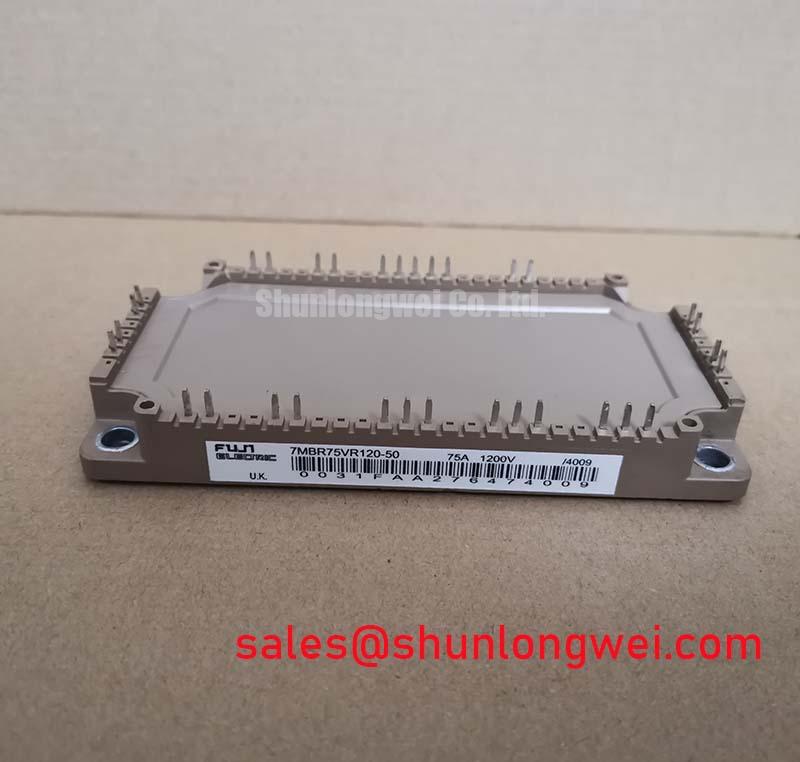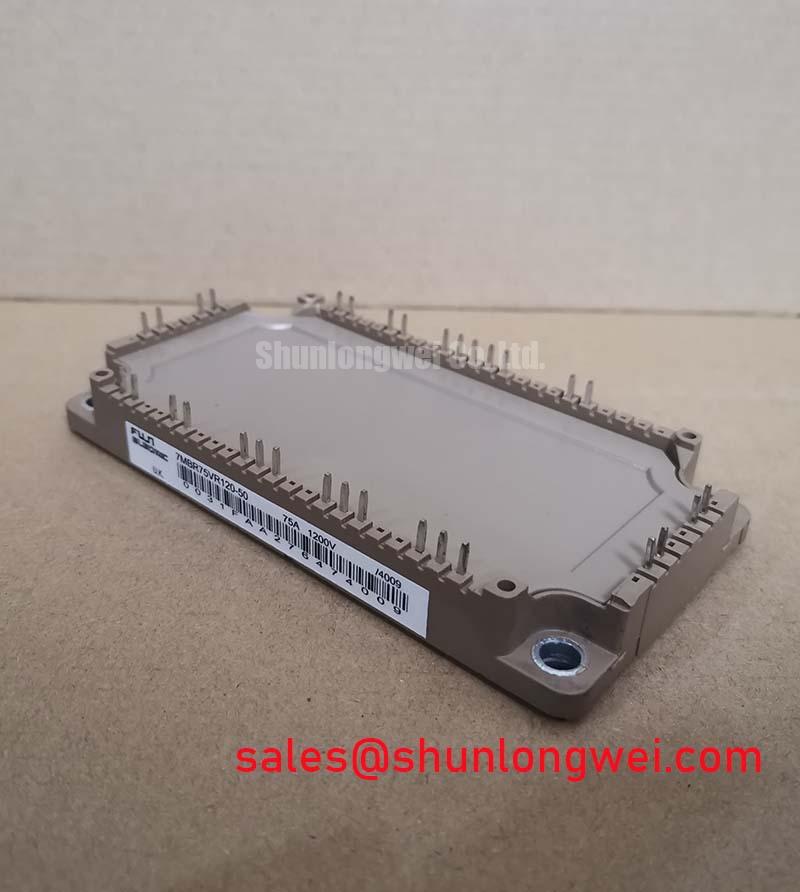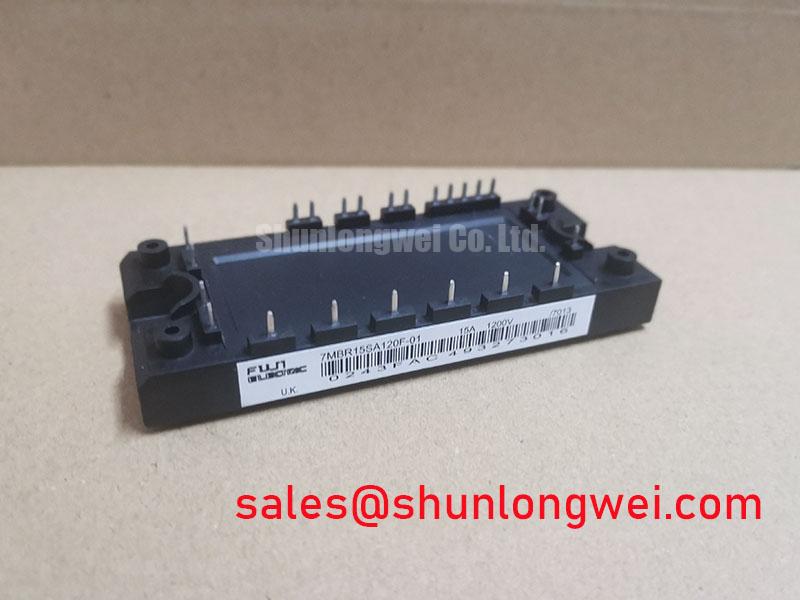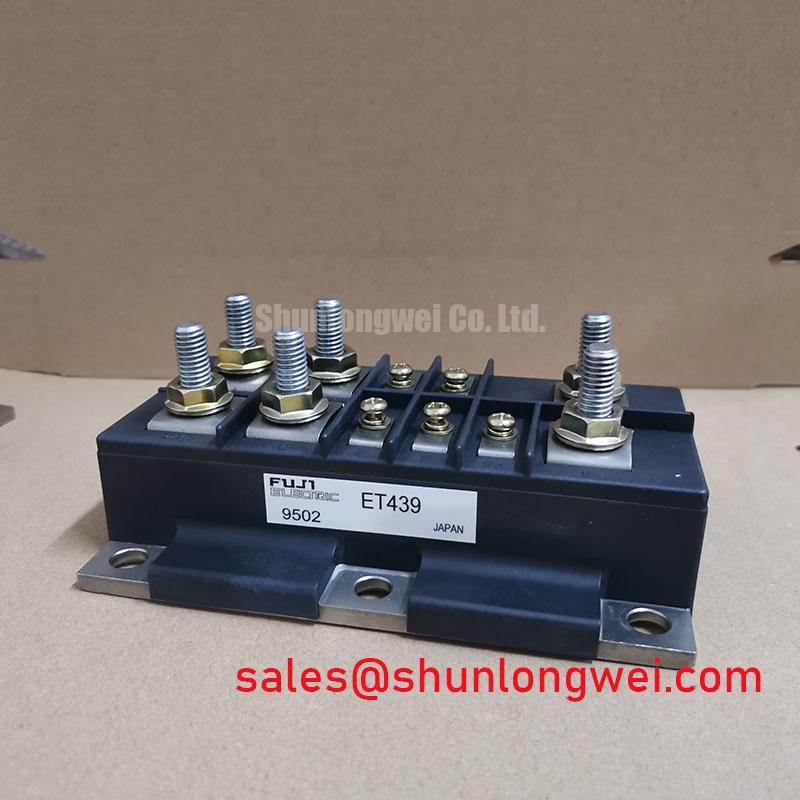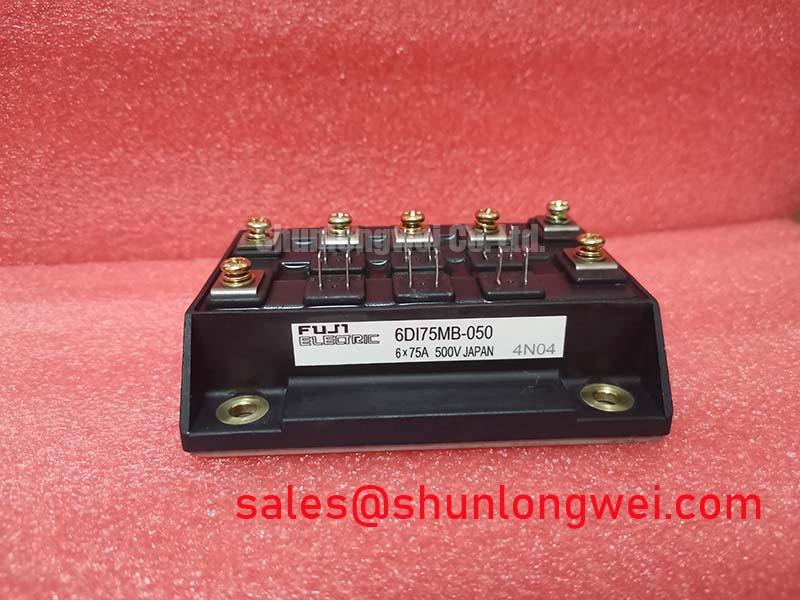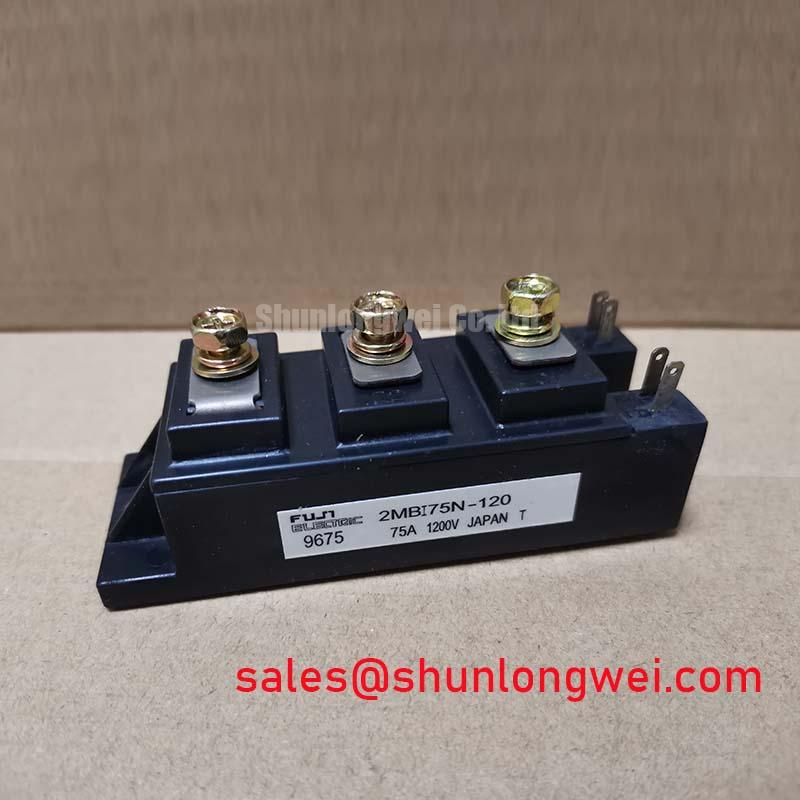Content last revised on October 22, 2025.
7MBR75VR120-50 | 1200V 75A IGBT PIM Module for High-Reliability Motor Drives
The 7MBR75VR120-50 from Fuji Electric is a 7-in-1 Power Integrated Module (PIM) engineered for exceptional thermal management and reliability in compact power conversion systems. Featuring key specifications of 1200V | 75A | VCE(sat) (typ) 1.8V, this module delivers tangible engineering benefits including enhanced thermal performance and simplified system design. By integrating a full three-phase inverter, brake chopper, and NTC thermistor, it significantly reduces assembly complexity and improves reliability compared to discrete component solutions. For motor drives up to 37kW requiring robust thermal headroom, the 7MBR75VR120-50's low thermal resistance makes it a definitive choice for demanding applications.
Key Parameter Overview
Decoding the Specs for Enhanced Thermal Reliability
The technical specifications of the 7MBR75VR120-50 are optimized for efficiency and robust operation in industrial environments. The parameters are grouped by function to facilitate a clear evaluation for specific design stages.
| Parameter | Value | Conditions |
|---|---|---|
| Inverter Section (per IGBT) | ||
| Collector-Emitter Voltage (Vces) | 1200 V | Tj = 25°C |
| Continuous Collector Current (Ic) | 75 A | Tc = 80°C |
| Collector-Emitter Saturation Voltage (VCE(sat)) | 1.8 V (typ) / 2.3 V (max) | Ic = 75 A, Vge = 15 V, Tj = 25°C |
| Turn-on Switching Loss (Eon) | 11.0 mJ/pulse | Ic = 75A, Vcc = 600V, Tj = 125°C |
| Turn-off Switching Loss (Eoff) | 12.0 mJ/pulse | Ic = 75A, Vcc = 600V, Tj = 125°C |
| Thermal Resistance (Rth(j-c)) | 0.26 °C/W | Junction to Case, per IGBT |
| Brake Section (IGBT) | ||
| Continuous Collector Current (Ic) | 35 A | Tc = 80°C |
| Collector-Emitter Saturation Voltage (VCE(sat)) | 2.0 V (typ) / 2.5 V (max) | Ic = 35 A, Vge = 15 V, Tj = 25°C |
| NTC Thermistor Section | ||
| Resistance (R25) | 5 kΩ | T = 25°C |
| B-Constant (B25/50) | 3375 K | - |
Download the 7MBR75VR120-50 datasheet for detailed specifications and performance curves.
Application Scenarios & Value
System-Level Benefits in Thermally Demanding Motor Drives
The 7MBR75VR120-50 is engineered for mid-power applications where reliability and power density are critical design constraints. Its primary value is realized in systems such as Servo Drive systems for industrial automation, small-to-medium sized Variable Frequency Drives (VFDs), and general-purpose inverters. What is the key advantage of the 7MBR75VR120-50's PIM structure? It simplifies design by integrating a complete inverter and brake circuit, reducing component count, minimizing PCB complexity, and lowering assembly costs.
Consider a compact servo drive designed to operate within a sealed, fan-less enclosure for a CNC machine. The primary engineering challenge is managing heat dissipation to ensure long-term operational stability. The module's low junction-to-case Thermal Resistance (Rth(j-c)) is the decisive parameter. This superior thermal performance is like having a wider pipe for heat to escape the semiconductor chip; it allows engineers to use smaller, more cost-effective heatsinks or even integrate the machine chassis into the thermal solution, thereby meeting stringent space and noise requirements without sacrificing system reliability. While this 75A model is ideal for such systems, applications requiring less current could evaluate the 7MBR50VP120-50 for a more optimized footprint. Conversely, for higher power axes, the 7MBR100VX120-50 provides increased current handling capacity.
Frequently Asked Questions (FAQ)
Engineering Inquiries on Thermal Performance and Integration
How does the V-series IGBT technology in the 7MBR75VR120-50 impact the trade-off between conduction and switching losses?
The V-Series technology from Fuji Electric is engineered to provide a balanced performance profile optimized for motor drive applications, which typically operate at switching frequencies below 20 kHz. It achieves a low VCE(sat) of 1.8V (typ) at its nominal current, directly reducing conduction losses during the on-state. While optimized for lower conduction losses, it maintains controlled switching characteristics (Eon/Eoff) to minimize losses during transitions without generating excessive voltage overshoots or EMI, striking a critical balance for efficient and reliable VFD operation.
What is the primary benefit of the module's integrated NTC thermistor for a Variable Frequency Drive (VFD) application?
The integrated NTC thermistor provides a direct, real-time measurement of the module's baseplate temperature, which is crucial for effective thermal protection. How does the integrated thermistor enhance reliability? It provides real-time temperature data for precise thermal protection. In a VFD, this allows the system controller to implement intelligent thermal management strategies, such as derating the output current or triggering a controlled shutdown if an over-temperature condition is detected due to fan failure, heatsink obstruction, or excessive ambient temperatures. This prevents catastrophic IGBT failure and significantly enhances overall system uptime and safety.
Technical Deep Dive
Analyzing the V-Series IGBT and Thermal Interface Design
A critical aspect of the 7MBR75VR120-50's performance lies in its thermal design, which begins at the chip level. The module utilizes Fuji's V-Series IGBTs, which are designed to minimize power losses, the primary source of heat. The module's low thermal resistance is not just a number; it's a direct reflection of an optimized thermal path from the silicon junction to the external heatsink. Think of thermal resistance like the narrowness of a drainage pipe. A lower Rth(j-c) value signifies a wider, more efficient pipe, allowing heat (the water) to flow away from the IGBT chip (the source) to the heatsink (the drain) with minimal obstruction. This efficiency prevents a dangerous 'backup' of heat that could elevate junction temperatures beyond safe operating limits.
Furthermore, the integrated NTC thermistor provides an essential feedback mechanism for the system's control logic. Operating an IGBT module without temperature feedback is analogous to driving a high-performance car without a temperature gauge. While the system may function, the controller is blind to the thermal stress on the power stage. The thermistor acts as that critical, real-time gauge, enabling the implementation of protective features outlined in standards like IEC 61800, and ensuring the module operates within its specified safe operating area (SOA) under all load conditions.
For engineers designing compact and reliable motor control systems, the 7MBR75VR120-50 offers a highly integrated and thermally efficient solution. We encourage you to review the detailed performance curves in the official datasheet to validate its fit for your specific application's thermal and electrical requirements.

